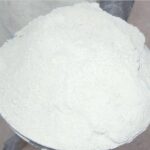Microsilica (White)
We are the stalwarts in the domain of manufacturing, supplying, wholesaling, and exporting Microsilica These flavor grade chemicals are processed using pure and accurate ingredients that are procured from reliable and trusted vendors of the market. Our range is available in the market at leading prices in packs of different quantities.
Microsilica, also known as silica fume, is a fine-powder, high-purity silica that is used in a variety of industries, including construction, oil and gas, and paint. When used in paint applications, microsilica can enhance the paint’s performance in several ways.
Here are some potential applications and uses of microsilica (white) in paint:
Improved Adhesion: Microsilica’s small particle size and high surface area make it an effective bonding agent. When added to paint, microsilica particles can fill in surface irregularities and provide a larger surface area for bonding with the substrate. This enhances the paint’s adhesion to the surface, reducing the risk of peeling, cracking, or flaking.
Increased Opacity: Microsilica particles can reduce the amount of light transmission through the paint film, resulting in increased opacity. This can be particularly beneficial in coatings where hiding power is important, such as in exterior paints or in coatings for industrial machinery.
Reduced Settling: Pigments and other solid particles in paint formulations can settle over time, resulting in an uneven coating or a hard, settled layer at the bottom of the can. Microsilica can be added to paint to increase its viscosity and prevent the settling of these particles. This can improve the consistency and stability of the paint over time, reducing the need for frequent stirring or remixing.
Improved Rheology: The rheological properties of paint are important for its application and performance. Microsilica can improve the rheological properties of paint by increasing its viscosity and reducing sagging or dripping during application. This can make it easier to apply the paint in a uniform manner, resulting in a smoother and more even finish.
It’s important to note that the amount of microsilica used in paint formulations must be carefully controlled to avoid negative effects on other properties of the paint, such as gloss, color, and drying time. The size and surface area of the microsilica particles, as well as the type of paint and substrate, can also affect its performance. Therefore, it’s important to test the paint formulation before applying it to a larger surface area. Overall, microsilica can be a valuable additive in paint formulations, providing improved durability, adhesion, opacity, and rheology. However, the amount of microsilica used must be carefully controlled to avoid negative effects on other properties of the paint, such as gloss, color, and drying time.






